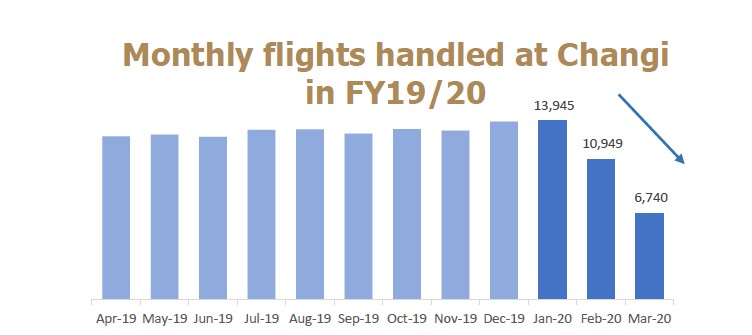Blue-chip companies are generally recognised as being large, stable and consistent.
These are companies that have enjoyed many years of growth and amassed an impressive track record.
However, blue-chip companies are not immune to economic slowdowns.
The COVID-19 pandemic has caused major disruptions to supply chains and suppressed demand for products and services.
These two blue-chip companies are seeing tougher times ahead, and have cut their dividends to conserve cash.
SIA Engineering Company Ltd (SGX: S59)
SIA Engineering Company Ltd, or SIAEC, specialises in aircraft line maintenance and maintenance, repair and overhaul (MRO) services for airlines. SIAEC is a subsidiary of Singapore Airlines Limited (SGX: C6L), or SIA.
For the fiscal year ended 31 March 2020 (FY 2020), SIAEC reported a 2.6% year on year decline in revenue.
Operating profit, however, increased by 19.2% year on year to S$67.7 million.
Though net profit increased by 20% year on year to S$193.8 million, the group reduced its final dividend by 37.5% to S$0.05 from S$0.08 a year ago.

Source: SIAEC FY 2019/2020 Presentation Slides
SIAEC started seeing a significant slowdown in March, when the number of flights handled at its Singapore base fell to only about 50% of its usual workload
These flight reductions had a direct and adverse impact on the group’s line maintenance revenues.
Fleet management revenue was also impacted as this is based on flying hours.
Base maintenance unit, along with engine and component segment, are expected to be badly affected moving forward even though the effect was insignificant for the fiscal year 2020.
Changi Airport had reported that the number of scheduled flights for April was 6% fewer than originally scheduled.
The plunge in flights for April and most of May will have an adverse impact on SIAEC’s financial performance.
The pace of recovery for the MRO business remains unclear, but is expected to be slow and is directly dependent on the recovery of the aviation industry.
Singapore Post Limited (SGX: S08)
Singapore Post is a leading post and parcel service player that provides innovative mail and logistics solutions in Singapore and the region. The group has operations in 19 markets.
For FY 2020, Singapore Post announced a slight year on year dip of 0.7% for its total revenue, while operating profit declined by 21.3% year on year.
Underlying net profit remained flat at S$100.2 million.
The group declared a lower final dividend of S$0.012, down 40% from last year’s S$0.02.
For FY 2020, total dividends came up to S$0.027, a drop of 23% from the S$0.035 declared in the fiscal year 2019.
Singapore Post’s post and parcel division, which made up 56% of group revenue, continues to see declines in mail volumes.
Revenue for this division fell just 1% year on year from S$745.7 million to S$737.2 million.
Operating profit for the division, however, plunged by 23% to S$127.5 million.
Letter volumes continue to decline at a double-digit percentage, while border closures and the grounding of airlines will add to freight costs and terminal dues.
In short, Singapore Post does not expect to see a material improvement in the business environment anytime soon.
Get Smart: Expect more pain
These two blue-chip companies are not the only ones facing tough challenges ahead.
The current quarter will turn out to be even harsher than the previous, as the full impact of the pandemic will be felt.
More pain will be felt by a wide range of businesses, whether they are directly or indirectly affected.
As the situation is dynamic and continues to evolve, it is uncertain at this point when a tentative recovery can be seen.
With share prices battered to multi-year lows, many attractive investment opportunities have emerged. In a special FREE report, we show you 3 stocks that we think will be suitable for our portfolio. Simply click here to scoop up your FREE copy… before the next stock market rally.
Disclaimer: Royston Yang does not own shares in any of the companies mentioned.




